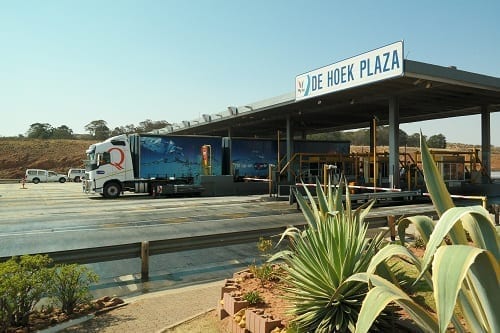…continued from part two.
The N3TC is a client of the De Hoek plaza and as such has a collaborative partnership with it. Risk has to be managed in a way that keeps the plaza sustainable. The plaza has been ISO accredited for over four years now, while an employee recognition system, called Pride (Personal Responsibility in Delivering Excellence), gives staff members a monetary incentive to perform at their best.
The N3TC has been testing an electronic tolling collection process, designed to allow vehicles to pass through the De Hoek Toll Plaza between speeds of 10 km/h and 15 km/h. The plaza has a specification in terms of service rate, which is the time taken between drivers paying toll fees and the time toll booth operators hand back change/issue receipts. For light vehicles, the benchmark is one minute. This will reduce as the electronic payment method is introduced. For trucks, it’s a little longer – about a minute and a half. Independent auditors evaluate service rates and levels and perform queue lane checks as well.

Three lanes, in each direction, must be open at any given time. About 2 500 vehicles an hour pass through the plaza at its peak.
E-tags will be introduced as an alternative payment method this year, boasting full interoperability with the N3TC’s current payment system. A dedicated lane will not be created, however, thereby eliminating the chance that a big rig enters a lane with no cashier in sight. While the electronic tags are the same, the camera system is not the same as those used in Sanral’s controversial Gauteng Freeway Improvement Project. Toll tariffs were set at the outset of the 30-year concession contract.
…
more in part four.

